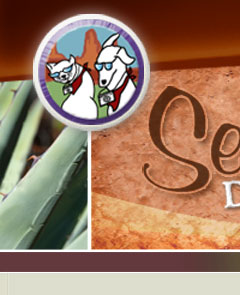

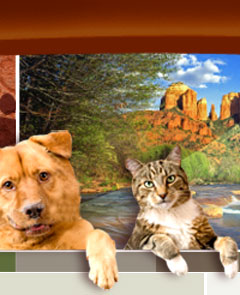
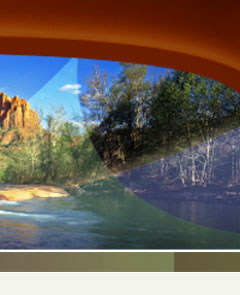
 |  |  |  |
| |

| About Sedona and the Verde ValleyFrom a Dog's Point of View ...
It's a Dog's world out there! Lots of fun hikes to go on in the forest with your people, dog parks to visit to make new friends and coffee shops and restaurants where you can sit outside, have a biscuit or two and a bowl of water, while your people have their food and drink. Did I mention the creek? We have a creek and a river here and we get wet, swim, chase things and, and ... I think I better turn this over to my people to finish. It's just too exciting and I really need to lay down, enjoy the cool tile, and take a well-deserved dog nap. Q-dog out ...
Never been to Sedona? Put it on your bucket list!
Whether you're hiking on one of the more than 70 trails in Red Rock Country or sitting at a cafe enjoying a latte, you'll find yourself surrounded by soaring jagged red rock spires adorned by shades of evergreen and set against a sky of Crayola Blue.
On another day you might luxuriate in a dreamy creamy mocha experience under storm clouds brewing from every direction.
Everything changes, and you find yourself swimming in the blurs of a blue and white pattern of porcelain Flow Blue.
Sedona has it all!
Fed by snow melt from the San Francisco Peaks near Flagstaff, Oak Creek sends clear water streaming down the canyon carrying with it the energy of and for life. Sustaining fresh water blesses the high desert environment and balances the land and its inhabitants. The water continues until it meets the Verde River to wind through the Verde Valley, nourishing the native land, the sustainable farm lands and vineyards.
Sedona supports a year round population of approximately 10,400 residents rising to approximately 11,300 in the cooler months. The 19 square miles of the city dwells at an elevation of approximately 4,350ft (at Town Hall). Sedona welcomes anywhere from 2 to 4 million tourists per year.
The list goes on, all cradled in four mild seasons, abundant sunshine, welcomed monsoons, and clean air.
Serving and Protecting We live in this wondrous place, Sedona and the Verde Valley, and we are proud to aid in helping to preserve the beauty, the abundance, and the quality of life. Through extensive volunteering and active government, Sedona residents seek to make Sedona a sustainable model city and the Verde Valley a thriving sustainable agricultural resource. Two outstanding non-profit organizations, committed to Sedona and Red Rock Country are Keep Sedona Beautiful, Inc. and Friends of the Forest. Both consist primarily of volunteers from the community.
The Friends of the Forest have donated well over 25,000 volunteer hours in support of the U. S. Forest Service. Friends of the Forest is a nonprofit, nonpolitical organization, with membership open to all who are dedicated to maintaining, protecting, and restoring the scenic beauty of our National Forest lands in the Sedona area for the enjoyment and use of present and future generations. By building a partnership with the Red Rock Ranger District of the Coconino National Forest, Friends of the Forest volunteers help fill the gap between needs and resources. They provide teamwork and financial resources to assist the Forest Service in its day-to-day operations. Visit the Friends at www.friendsoftheforestsedona.org.
Historic Sedona
Sedona, founded in 1902, has a rich history. You may have seen Sedona long before you knew about her in movies such as the 1923 Zane Grey's Call of the Canyon. In 1945, John Wayne came to town for his first stint as producer; Angel and the Badman co-starred the beautiful Gail Russell. For this film Wayne had a western town set built in what is now the Sedona West residential subdivision. Streets there are named Johnny Guitar, Pony Soldier, Gun Fury and others.
Almost 100 feature films and countless video productions and commercials have been shot either in full or in part in the Sedona area. For three decades, Westerns were the most popular movies in America. From "shoot'em-ups" to romance, dramas, and the singing cowboy films which attracted audiences from around the world.
Stars who worked here also include James Stewart, Henry Fonda, Sterling Hayden, Joan Crawford, Glenn Ford, Robert DeNiro, Robert Young, Hopalong Cassidy, Tyrone Power, Rock Hudson, Donna Reed, and hundreds of others.
Really Old Sedona Geologically, the history of Sedona began about 500 millions years ago. Over a period of 300 million years, the land was alternately ocean bottom and coastal plain. Between 200 and 65 million years ago, dinosaurs roamed the land. Next, from about 65 to 20 million years ago, there were uplifts in southern Arizona and down faulting and wind erosion in northern Arizona. Froml 20 to 12 million years ago, volcanic activity caused the Verde Valley to down fault into a deep basin with lake beds, creating the Mogollon Rim. Finally, about 3 million years ago, the Colorado Plateau uplifted. Since then, erosion by wind, rain and snowmelt has created Oak Creek Canyon and exposed the layers of sediment (Schnebly Hill Formation sandstone) to form the spectacular red rock formations we now see in Sedona. As the vegetation and wildlife evolved and migrated, Sedona and the Verde Valley became a fertile and abundant jewel for the indigenous people. We are the benefactors today.
Remembering the Agricultural Bounty
Sedona and the Verde Valley served as a significant agricultural hub early on. Will Jordan first began growing fruit in the Verde Valley near Clarkdale, but the smoke from the smelter damaged the trees, so Jordan moved to Sedona in 1927 and settled near Oak Creek. One of the most difficult tasks was getting water to the orchard so in 1929, Walter Jordan and his brother George improved an irrigation ditch and built a water wheel to pump water from Oak Creek to the trees. George Jordan later added wells and pumps; his system provided the first commercial water supply to Sedona residents and apples in Oak Creek Canyon are still enjoyed to this day. The Jordans drove their fruit to markets in Jerome, Prescott, Wickenburg, and Phoenix. They also shipped fruit to Seattle, San Francisco, and St. Paul, Minnesota. Local residents and tourists purchased fruit at George Jordan's retail store. Walter and Ruth Jordan sold most of their orchard land in 1972 for a subdivision; and the remainder is now the City's Jordan Historical Park. At the same time cattle ranching played a significant role in Sedona's history. Herds were driven to high ground on the Mogollon Rim to graze in summer and returned to the Red Rock area in winter. Cattlemen leased grazing rights on the National Forest lands which also continues in current times.
The Verde Valley Agricultural Renaissance Begins 2009 The desire to reach sustainability has led Sedona and Verde Valley citizens to look to the past to create a path to the future.
“In the end we conserve what we love. We love what we understand. We understand what we are taught.” – Baba Dioum, Senegal (1968)
One day soon, because of what we learn, think about, talk about, pray about, and do in these next weeks, months and years, our society is sustainable: it exists and functions and thrives in harmony and balance with Nature — with the Biosphere, the ‘environment’, the community of all living beings and their habitats. This is the next step in our human evolution, in our ‘co-dependant arising’ with all other life forms. We accept our responsibility to become effective stewards and caretakers of this Earth – to relate to and participate in this world as a “communion of subjects”, not a “collection of objects” (Thomas Berry). In part, this requires our understanding and actions to — cease our destructive activities; clean up the messes we have made; protect the rest of the biosphere from any further destructive human actions and behaviors; and regenerate, restore, renew and increase the communities of living beings in the biosphere. These understandings inform our criteria and values to guide decision-making. You can find the continuation of this paper, The Vision Draft as of January 2009, by connecting here.
|
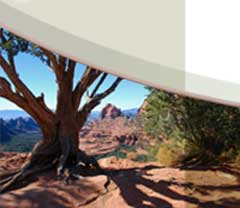 | 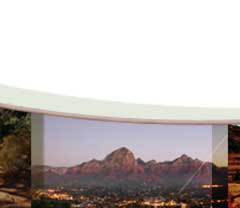 | 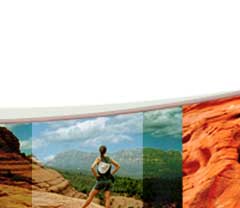 | 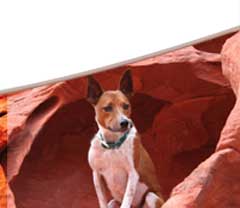 |